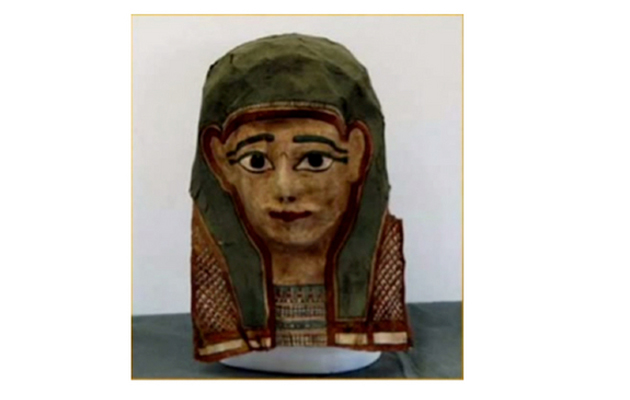Oldest fragment of Mark’s gospel may be found in a mummy mask
A small papyrus fragment containing words from the Book of Mark could end up being the earliest copy of a Christian gospel on record.
LiveScience, The Gospel Coalition · CAIRO · 21 JANUARY 2015 · 17:00 CET

A fragment of the gospel of Mark, written during the first century, before the year AD 90, has been found on a papyrus used on a mummy mask. This discovery may be the oldest copy of a gospel known to exist.
The text was written on a sheet of papyrus that was later reused to create a mask that was worn by a mummy. Although the mummies of Egyptian pharaohs wore masks made of gold, ordinary people had to settle for masks made out of papyrus (or linen), paint, and glue. Given how expensive papyrus was, people often had to reuse sheets that already had writing on them.
In 2012 Daniel Wallace, a New Testament scholar at Dallas Theological Seminary, commented in a public debate that researchers had found a fragment of the earliest copy of the Gospel of Mark. Another scholar, Craig Evans, a professor of New Testament studies at Acadia Divinity College in Wolfville, Nova Scotia, reconfirmed the existence of the fragment.
The text was dated through a combination of carbon 14 -dating, studying the handwriting on the fragment and studying the other documents found along with the gospel. These considerations led the researchers to conclude that the fragment was written before the year 90 AD. With the nondisclosure agreement in place, Evans said that he cannot say much more about the text's date until the papyrus is published later this year.
Until now, the oldest surviving copies of the gospel texts date to the second century (the years AD 101 to 200).
A NEW TECHNIQUE AND ITS DRAWBACKS
In recent years scientists have developed a technique that allows the glue of mummy masks to be undone without harming the ink on the paper. The text on the sheets can then be read.
The first-century gospel is one of hundreds of new texts that a team of about three-dozen scientists and scholars is working to uncover, and analyze, by using this technique of ungluing the masks, said Craig Evans to Live Science Magazine.
"We're recovering ancient documents from the first, second and third centuries. Not just Christian documents, not just biblical documents, but classical Greek texts, business papers, various mundane papers, personal letters," Evans told Live Science. The documents include philosophical texts and copies of stories by the Greek poet Homer.
The business and personal letters sometimes have dates on them, he said. When the glue was dissolved, the researchers dated the first-century gospel in part by analyzing the other documents found in the same mask.
One drawback to the process is that the mummy mask is destroyed, and so scholars in the field are debating whether that particular method should be used to reveal the texts they contain.
But Evans emphasized that the masks that are being destroyed to reveal the new texts are not high quality ones that would be displayed in a museum. Some are not masks at all but are simply pieces of cartonnage.
SET TO PUBLISH
Evans said that the research team will publish the first volume of texts obtained through the mummy masks and cartonnage later this year. It will include the gospel fragment that the researchers believe dates back to the first century.
The team originally hoped the volume would be published in 2013 or 2014, but the date had to be moved back to 2015. Evans said he is uncertain why the book's publication was delayed, but the team has made use of the extra time to conduct further studies into the first-century gospel. "The benefit of the delay is that when it comes out, there will be additional information about it and other related texts", concluded the professor.
Published in: Evangelical Focus - science - Oldest fragment of Mark’s gospel may be found in a mummy mask
